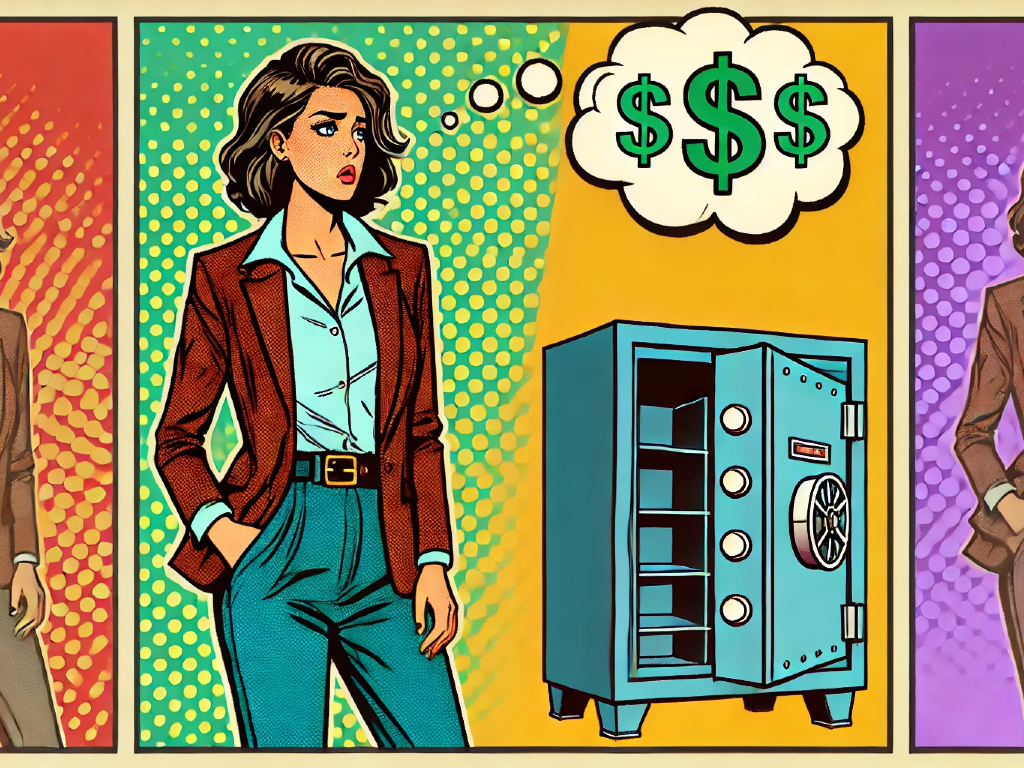All federal money is gone!
Oh, wait, it’s back again.
But not for all organizations.
Help!
Last week’s announcement that all US Federal loans, grants, and financial assistance programs were paused sent panic through the nonprofit sector around the world. The US National Council of Nonprofits called it “… a potential 5-alarm fire for nonprofits and the people and communities they serve.”
That may have been an understatement. US nonprofits get about a third of their total funding, directly or indirectly, from Federal grants.
Grants of international aid remain “on hold” for 90 days. Most other grants seem to be back “on.”
But for how long? And for whom?
Maybe you’ve heard the expression, “We’re building the airplane while it’s flying.” That’s meant to describe a chaotic and harrowing situation.
This feels more like, “We’re dismantling the airplane while it’s flying.” More chaotic. More harrowing.
For international aid nonprofits, the impact is already happening. Massive cuts to whole programs. Staff layoffs. Spending freezes.
But what about all the other nonprofits? Are they “safe”? What about nonprofits in the rest of the world? Is this a US-only crisis that they will avoid?
The short answer is: No nonprofits in any sector or anyplace in the world can rest easy.
You might get the upcoming grants you’ve been promised. But you may not. If your cause is perceived to have an ideological slant, any funding is still at risk. And because the international aid community is interwoven throughout the world, cuts to US funding are already hitting organizations in other countries.
Beyond the obvious crisis of lost or delayed funding, nonprofits face additional indirect and ongoing problems:
- Chaos and Confusion. Loss, delay, or threatened loss of Federal funding make planning and executing the work difficult. Do you cancel threatened programs? Lay off staff? Scramble for alternate funding? High employee turnover (see the next point) could lead to lower quality fundraising and program execution.
- Layoffs and job market disruptions. Large numbers of nonprofit workers—especially in healthcare, education, social services, and overseas aid—could lose their jobs. This would flood the job market and possibly depress wages. The instability may lead nonprofit professionals to seek employment in other sectors entirely. Short term, it may be much easier to fill open jobs with strong talent. Long-term, the pool of talent could drastically shrink.
- Ripple effects on International aid. US-funded NGOs operating abroad—especially in crisis relief, healthcare, and refugee aid—may shut down or severely cut back. (UNHCR’s announced blanket worldwide cuts.) This is likely going to be common. Charities in developing countries that rely on US funding (directly or indirectly) could face drastic financial shortfalls.
- Increased competition for donations. Expect an explosion of emergency fundraising appeals from big and small charities hit hard by cuts . Major donors especially are likely to be overwhelmed with funding requests.
What smart fundraisers can do – short term
If you face a loss of funding – whether it’s direct, indirect, or potential – ask your donors to give!
This is an emergency, and donors are aware of it – or soon will be. And donors want to help.
COVID showed us this. Fundraisers who reached out to donors with urgent and honest messages had record-breaking years. Those who stayed silent suffered catastrophic losses of revenue. This crisis may be a lot like that one.
What smart fundraisers can do – long term
This steep and sudden loss (and threat of loss) of government funding exposes the fragility of grant-reliant charities and the need for a resilient, donor-focused fundraising model.
Nonprofits that rely on large single sources of revenue – whether it’s government, corporate, or foundation grants – are always at risk. Large funders can, and eventually will, stop or reduce funding.
Leaving you in the lurch. As many of us are right now.
Building a broad base of individual donors gives you resilience, especially in hard and uncertain times. All donors eventually stop giving, but the loss of one donor at a time is not catastrophic.
A large and growing group of individual donors is not only a source of income. It is a pool of people who can “upgrade” their giving to monthly giving, high-dollar giving, and bequests.
Starting now, shift emphasis (and budget) toward individual donor engagement strategies. If you’re already doing this, do it more. If you are not doing this, start. Late is better than never!
What smart fundraisers must not do
Nonprofit leaders may be tempted to weather the financial storm by cutting fundraising – programs and people. This may look like a relatively easy savings.
Cutting fundraising is the worst possible action. It will prolong your financial pain and decimate your long-term viability.
This is a defining moment charities. What we do now will determine how we survive the coming weeks –- and the years ahead.
We at Moceanic are here to help. Normally, the doors to the Fundraisingology Lab are closed at this time of year, but we’re opening them because this is such a critical time.
Moceanic can help!
Join The Fundraisingology Lab for expert help and training – plus fundraising templates for this funding crisis. You’ll also be part of a supportive community of fellow fundraisers, full of ideas, experience, connections — and shoulders to cry on. Join this game-changing community now to weather the storm as well as possible!











4 Comments. Leave new
Jeff,
First, let me say that publishing this article with an illustration of a food bank, an inherently LOCAL non-profit, is irresponsible and could lead to greater panic!
Second, non-profit organizations were not designed to rely on federal governmental grants as their primary source of revenue. They are already subsidized by the government(s) by their charitable tax exemption.
Grants are meant as extra revenue for special projects, not for basic operations. If non-profit organizations ignored that principle and became dependent on the (federal) government, it’s high time they re-examined their CHARITABLE raison d’etre and, as you say, rebalanced their operational resources. A much needed wake up call!
The fact is that the US government is deeply in debt, so pausing to review the explosion in government spending is not only wise, it’s necessary; especially funding for organizations that in some cases have operated to the US public’s detriment.
From a volunteer at local non-profits that don’t accept government subsidies (just an occasional grant for a limited project.)
You were right about the image – so we’ve changed it. Thanks for the feedback!
It’s a complicated situation. One thing is for sure, any single source of large funding carries risk. Having diversified fundraising income is so important.
We’re here to help fundraisers navigate this challenge, so they can create stronger, more resilient nonprofits.
I agree, Moceanic has been great in championing a healthy, diversified funding model for non-profits. Keep up the good work.
As an outsider (non-US) I won’t get into whether the govt is in debt etc. But what I will say to Dr. Ivana Pelnar-Zaiko is that the idea that “non-profit organizations were not designed to rely on federal governmental grants as their primary source of revenue.” is spectacularly reductive.
Not For Profits are designed a multitude of ways and those designs are often in flux, even in the most well thought out of NFPs.
If an NFP has built its revenue model around government support (whether that was the wisest thing to do or not) it’s because they are providing a service that a government can’t provide itself or lacks a level of expertise in, or at the required scale, but that they recognise the value of.
I won’t contest that relying on government funding, like relying on any one source of funding, is certain to lead to a revenue shock at some point.
But that NFP’s have a particular design model they should all follow. Can’t back you on that.